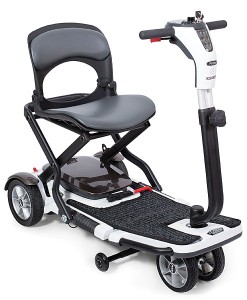In everyday life, we stumble and fall, literally and figuratively. Nevertheless, the point we should keep in mind that we should get up, dust ourselves off and return to our journey. Whether you are young or elderly, we have experience accidents that result in fractures, which may be painful during the injury and recovery. You may have to go through months of being in a cast, use mobility aids such as crutches or walkers, and not to mention even need pressure injury solutions to ensure the healing process progresses well.
What is a Fracture?
Essentially a facture is the term for when a break or crack is present in a bone. This occurs usually after an injury or accident where the bone was not able to withstand the force of an external entity. The most common sites for factures are the wrist, hip and ankle and usually treated with non-surgical procedures, however some will need surgery to rectify the breaks and bring the bone together and set it in place (usually with metal rods or plates inserted to keep the bone together until it heals). The non-surgical approach entails setting the area and immobilising the bone within a plaster cast for a certain period of time. In such events, you may find that getting around can prove to be difficult and you will require assistance with daily living needs.
Types of Fractures, Diagnosis and Treatment
There are many types of fractures out there, where it’s easier for doctors to tell them apart under x-rays, CT or MRI scans (for fine fractures). Usually bones are able to heal by themselves, but if not treated correctly, it will heal incorrectly without being lined together and that may cause problems later on in life. That is why medical treatment of fractures is important, whether you require surgical or non-surgical treatment.� Both essentially achieve the same goal, which is to set and line the bones together perfectly, and thereafter let it heal aided along by the treatment.
Depending on the severity and the location of your fracture, your treatment may include anything from the use of splints (to limit mobility of a broken limb), braces (that help support the bone), plaster casts (supports and immobilises the bone), traction, surgically implanted rods/plates (to hold the bones together) and not to mention pain relief. Traction is a type of decompression therapy that uses mechanical force to put tension on a displaced bone to ensure it stays correctly and not used often but can be beneficial for certain patients. Independent Living Specialists offers the likes of the Heel Lift Traction Boot which also helps in the prevention of pressure injuries with the use of latex free medical grade foam.

The Healing Process for Bone Fractures
The way your body heals your bones is by blood clots forming in and around the broken edges of the bone, where over the course of five weeks or so it joins the two broken bone edges together with the aid of cartilage and fibrous cells known as callus or temporary bone. It is important to note that though your doctor may remove your cast� or splint after a few weeks has passed, it does not mean that your temporary bone is as strong enough to bear the weight you were able to before and due care must be taken.� Utilise mobility aids such as crutches (it is important to learn how to use properly to avoid further injury), knee walkers, or even lift chairs and mobility scooters to make daily life easier. You are able to hire mobility aids from Independent Living Specialists online or at any of our Sydney showrooms.
�  |
 |
 |
| Knee Walker | Lift Chair | Mobility Scooter |










